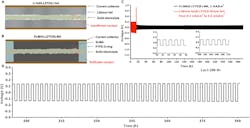Semi-Liquid Metal Anode Yields Higher-Capacity, Safer Lithium Batteries
The quest to improve rechargeable batteries—especially those of the lithium-base variety—continues with efforts involving their electrolytes as well as their electrodes. A team at Carnegie Mellon University has developed and evaluated a semiliquid-lithium, metal-based anode that they claim provides both higher capacity and safer performance compared to typical lithium-based batteries using lithium foil as the anode.
It's well-known that repeatedly charging and discharging lithium-based cells induces formation and growth of strands of lithium (called dendrites) on the electrode’s surface. These can pierce the membrane that separates the anode and cathode, resulting in direct contact and thus a short circuit, possibly leading to ignition and fire.
Among the available solutions to this problem is replacement of the liquid electrolyte with solid-ceramic versions; these are highly conductive, non-combustible, and impervious to penetration by dendrites. However, these electrolytes also result in reduced battery capacity, which is negative attribute.
The C-M team developed an alternative by creating a dual-conductive polymer/carbon composite matrix with a uniform distribution of lithium microparticles (Fig. 1). The matrix maintains its “flow” at room temperatures, and thus ensures contact with the solid electrolyte.
1. For preparation of the semi-liquid lithium metal anode (SLMA), lithium foil and lithium bis(trifluoromethanesulfonyl)imide (LiTFSI) were added into a glass vial containing poly(ethylene glycol) monomethyl ether (mPEG) at 200°C. The formed emulsion was then redispersed into THF and carbon black was added. After sonication and drying, the SLMA was formed at room temperature. (Source: Carnegie Mellon University)
They reversed the liquid electrolyte/solid anode interface to a solid electrolyte/liquid anode form, so that combustible electrolytes are no longer needed while the interface contact is sufficient. The design of phase reversing and emphasis on the use of polymers in metallic electrode preparation represents a new approach to the development of safer metallic-anode batteries.
"Incorporating a metallic lithium anode into lithium-ion batteries has the theoretical potential to create a battery with much more capacity than a battery with a graphite anode," said Krzysztof Matyjaszewski, J.C. Warner University Professor of Natural Sciences in Carnegie Mellon's Department of Chemistry. "But, the most important thing we need to do is make sure that the battery we create is safe."
Using their semiliquid metal anode with a garnet-based solid-ceramic electrolyte, they were able to cycle the cell at 10X higher current density than cells with a solid electrolyte and a traditional lithium foil anode. As an added benefit, this cell also had a much longer cycle-life than traditional cells (Fig. 2).
2. Setup and cycling properties: (a) schematic of a Li foil/LLZTO/Li foil symmetric cell with poor interface contact (LLZTO is garnet-type, ceramic electrolyte separator Li6.4La3Zr1.4Ta0.6O12); (b) schematic of a SLMA/LLZTO/SLMA symmetric cell with improved interface contact; (c) symmetric cycling of SLMA/LLZTO/SLMA at 1 mA/cm2 and Li foil/LLZTO/Li foil at 0.1–0.2 mA/cm2 at 65°C, with half-cycle time of one hour; (d) zoom-in voltage profile of the last 100 hours of the symmetric cycling of SLMA/LLZTO/SLMA at 1 mA/cm2. (Source: Carnegie Mellon University)
Full details of the research, which was funded by the National Institutes of Health and the National Science Foundation, are published as “A Semiliquid Lithium Metal Anode” in Joule (an open-access version is posted here).



